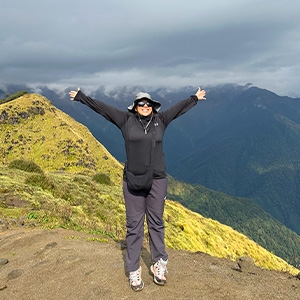Fitness
It should go without saying that the trek will be much more difficult if you are physically unprepared. How fit you should be is frequently a subject of great debate. Although you don't have to be an ultramarathon runner, you must be physically fit enough to trek for several hours while carrying a heavy backpack. then repeat the process the next day. How well you get back on your feet after each day of hiking will depend on how fit you are. You'll be traveling so slowly, as was already mentioned, that if it weren't for the altitude, you'd probably grow tired of the pace!
Knowledge about high-altitude
To begin, you must have an understanding of altitude and the impact that low oxygen levels have on the body. Simply put, this is the single most important factor that determines whether or not people are successful on the mountain. Climbers on Kilimanjaro have an overall success rate that ranges between 55 and 65 percent.
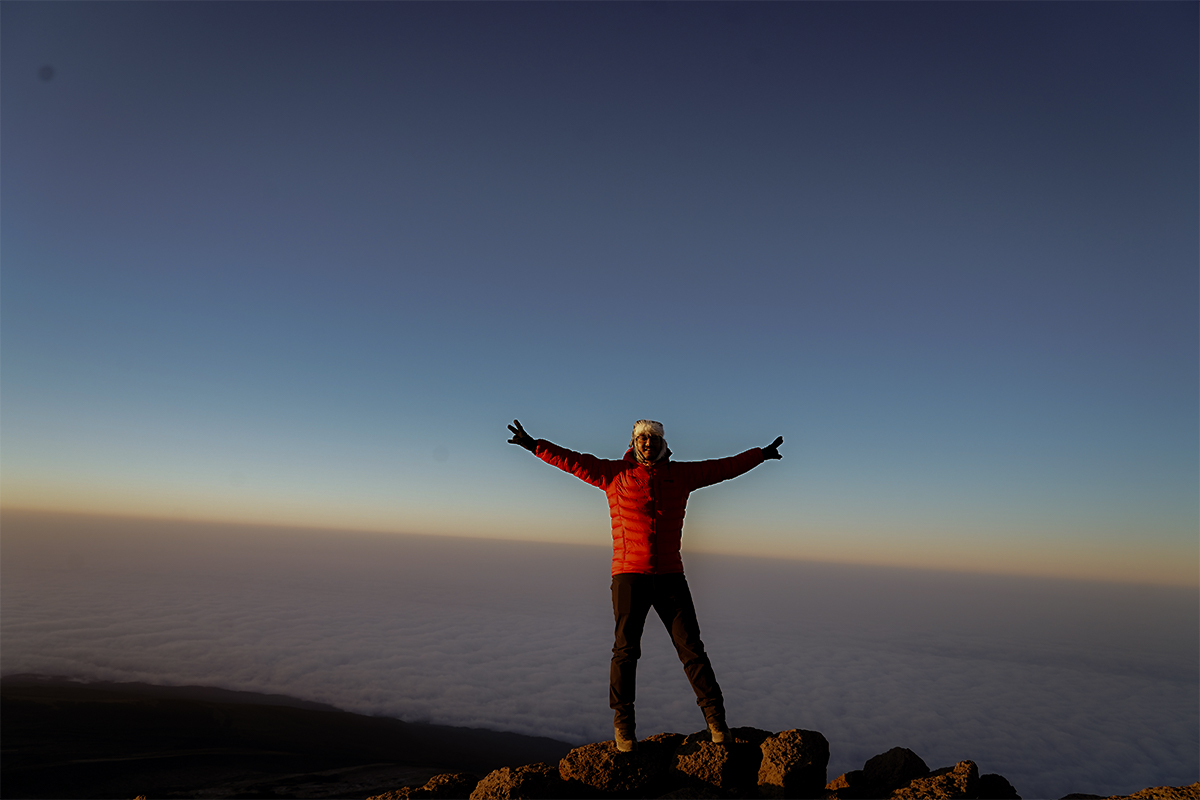
Why are there so few people reaching the summit of a peak that is not technically challenging? The response to this inquiry is uncomplicated. When people go to those heights, they need to give themselves more time to acclimatize to the altitude, which is why so many do not make it to the summit. It takes a long time to get used to a place where there isn't much oxygen. After seeing what hundreds of people did on Kilimanjaro, we think that the climb should take at least eight days. In addition to this, we have created our very own one-of-a-kind itinerary, which has a success rate of 95% on average and 100% on most trips. Check out the tailored made itinerary, here.
Can you climb Kilimanjaro without a guide?
No, Climbing Kilimanjaro without a guide is not permitted. The Tanzanian government requires all climbers to be accompanied by a certified guide, and it is mandatory to arrange the climb through a licensed tour operator. The guide and operator ensure the safety of climbers, follow environmental guidelines and adhere to park regulations. To book your Kilimanjaro Climbing, contact us for the best guidance and support throughout the journey.
Trusting your guide is essential since it helps reduce some of the anxiety that comes from worrying about how you are adjusting to the altitude. If you can tell your guide about any symptoms you have and get daily medical checks, you might feel more confident about pushing forward, even on days when it feels a little "too hard."
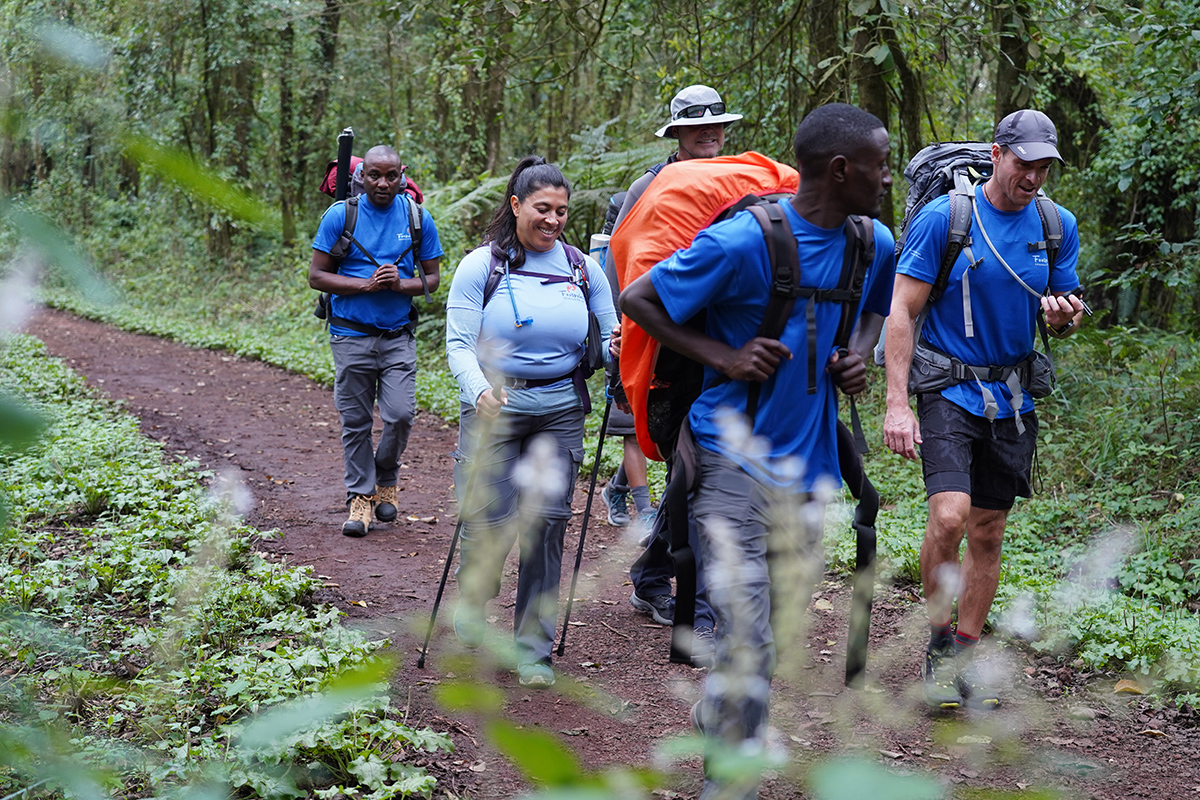
Additionally, attending in a group might be a wonderful way to share the experience and, although it won't be any less physically challenging, it might be less emotionally challenging!
Sleeping on the trails
You might initially find camping and sleeping on Kilimanjaro tough if you're used to only being able to sleep in your bed with fluffy white sheets. Even though we provide comfortable sleeping bags and mats, if you've never slept in a tent before, it could take some getting used to.
If you spend your weekends sleeping on the ground in the woods, camping will feel almost luxurious to you because you don't have to prepare or build your tent! To complete your recovery, you must be able to sleep well. If you think you might find this part of climbing Kilimanjaro challenging, think about going through the Marangu route, where you stay in huts. Even better, spend a night or two practicing in your garden while borrowing a tent. We've talked to people who were very worried about how difficult camping and sleeping in a tent would be. They frequently say how much they will miss it when they get home by the time they reach the summit.
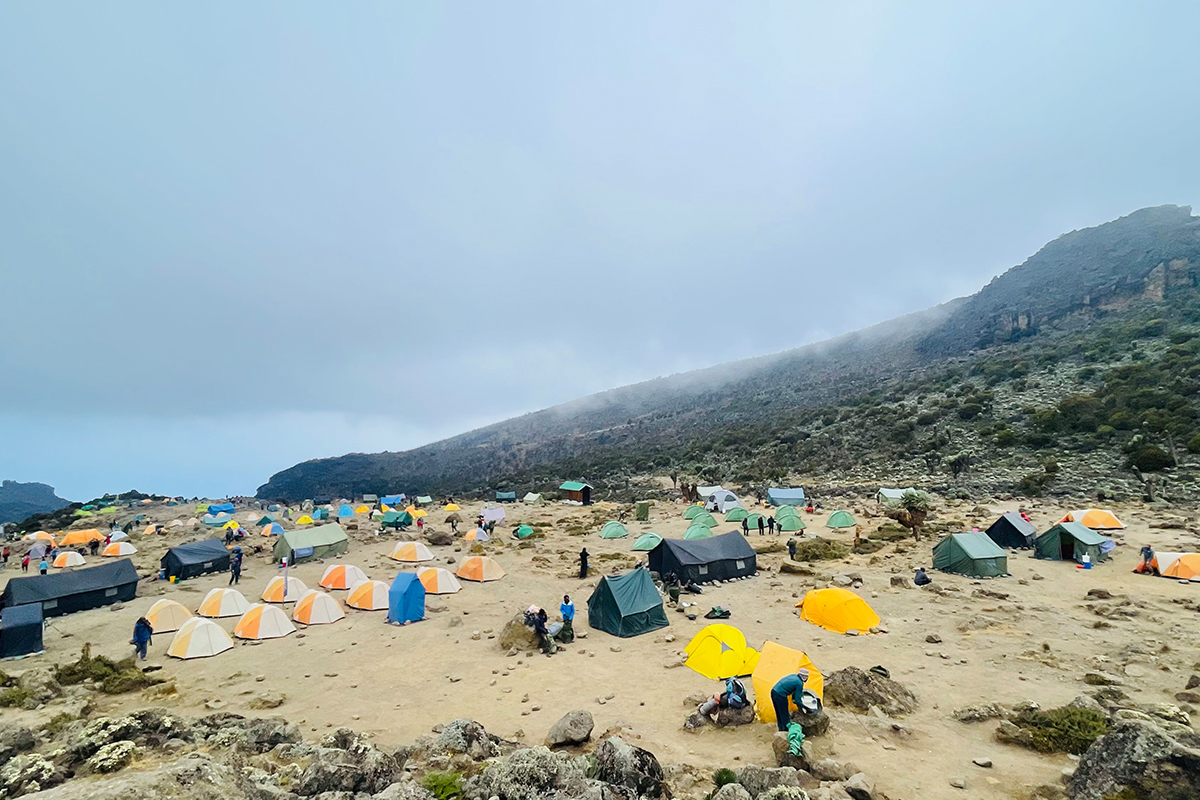
Your Medical Conditions
Of course, if you have other medical conditions or an accident that makes walking or carrying your bag difficult, you might find it tougher than others. Your doctor can advise you on whether you're in good enough health to climb Kilimanjaro. But be motivated by some of the people who, despite the odds being against them, managed to climb Mount Kilimanjaro! Maintaining your health is very important when hiking. It's crucial to keep yourself clean, especially before meals, to avoid gastrointestinal problems. You should make sure the climbing group you're with follows strict hygiene rules when preparing food. Learn more about the food and water on Kilimanjaro.
Weather and Temperature
A tough aspect of climbing Kilimanjaro could be unfavorable weather. Some seasons receive less rain than others, even though the weather in the Highlands is known for changing drastically. Low temperatures are present. As you ascend, the temperature drops precipitously at night. If you know you're sensitive to the cold, you need to be prepared and have the right gear with you. If you carry the right gear, your life on the mountain may become easier.
Mental Strength
The physical preparation of Kilimanjaro climbers has received a lot of attention. However, it might be argued that your mental toughness is much more important than your physical toughness. Some people don't realize how resilient they are until they are in a difficult situation.
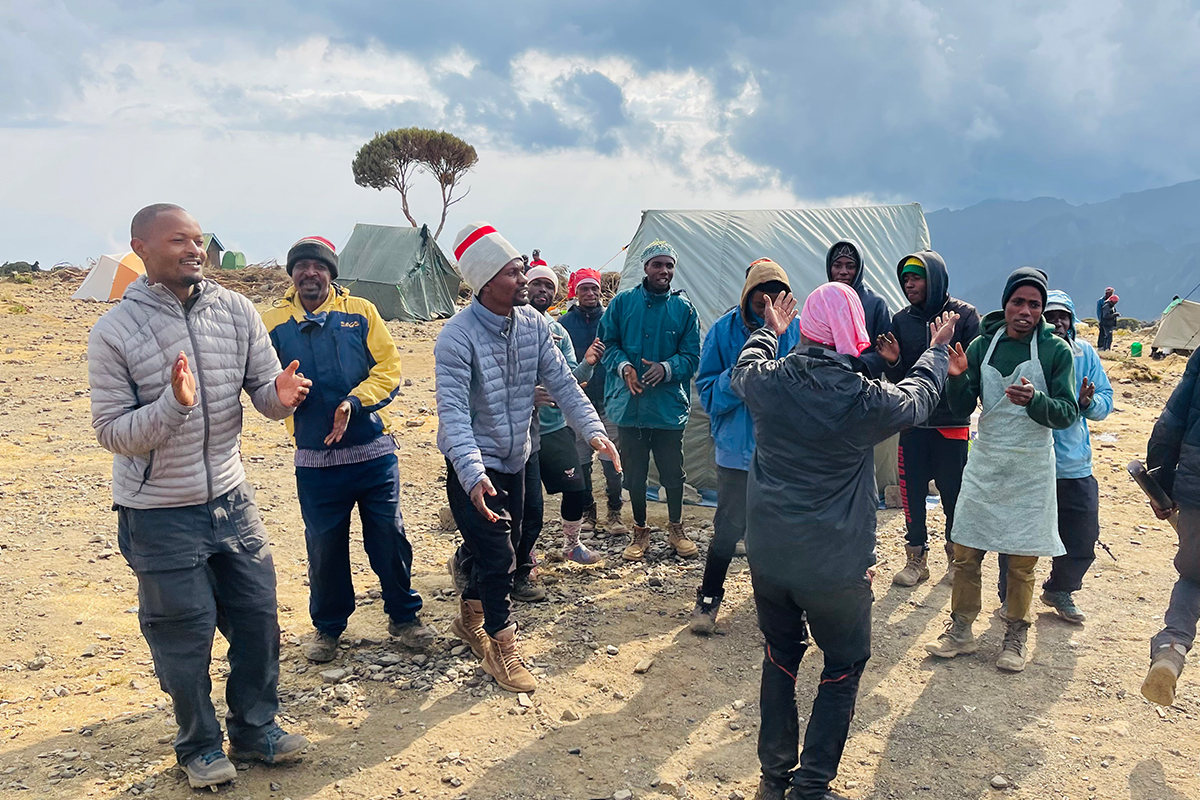
Emotionally and mentally, the climb can be difficult when you spend long days on the mountain, are far from home, sleep in tents, and hike in hard, cold weather. Especially at summit night, the arduous uphill trek can feel never-ending; your only motivation is your mental stamina. You might be more resilient than you think! The ascent of Kilimanjaro may be as challenging mentally and emotionally as it is physically, though, so it's crucial to bear that in mind. Keep in mind your "why." Why did you decide to climb Mount Kilimanjaro? You came to Africa specifically to conquer this enormous mountain, why? Remembering your reasons for doing this trip can be a great source of encouragement when times are difficult. Keep a positive outlook and take in the beauty of the mountain. You'll never forget how challenging it was to get there.
Food & Drinks
If you're dehydrated, this climb will be really difficult. Your capacity to adjust to the altitude and recover from a demanding day of hiking will be impacted. Drink a lot of water, please. You can add flavorings in the form of electrolyte powders or liquids, or if you'd like, simply some plain squash, if you find this challenging.
There will be a lot of calories burned off, so you must replace them. If you eat enough, you'll have more energy throughout the day and be better able to recover from strenuous activities. Bring your favorite energy bars or snacks from home since altitude may affect your appetite. These delicious delights could tempt you to eat when you're not hungry.
Kilimanjaro hiking essentials and gears
It's not only about the equipment you carry with you; there are thorough packing lists available. Equally important is the gear your trip operator brings. Even if you have everything you need, it won't help if you're sleeping in a drenched tent and perching on rickety chairs. To make sure that everything is kept in good functioning order, choose your business wisely. You should break in your shoes. Do not wait till you are in Africa to begin. When you get the chance to go hiking, stroll around the house, or use the treadmill, put them on. Make sure to wear your weighted pack and become familiar with how to adjust it and use it with various layering configurations. Stacking should be practiced until it becomes second nature.
Acute Mountain Sickness
Altitude sickness is a common concern for climbers tackling Kilimanjaro, given its substantial elevation. At 5,895 meters above sea level, the summit poses a risk of acute mountain sickness (AMS). Symptoms, including headaches, nausea, and fatigue, can manifest as the body struggles to acclimatize to reduced oxygen levels at higher altitudes. Preventive measures for AMS involve choosing routes with gradual ascents and incorporating acclimatization days into the itinerary.
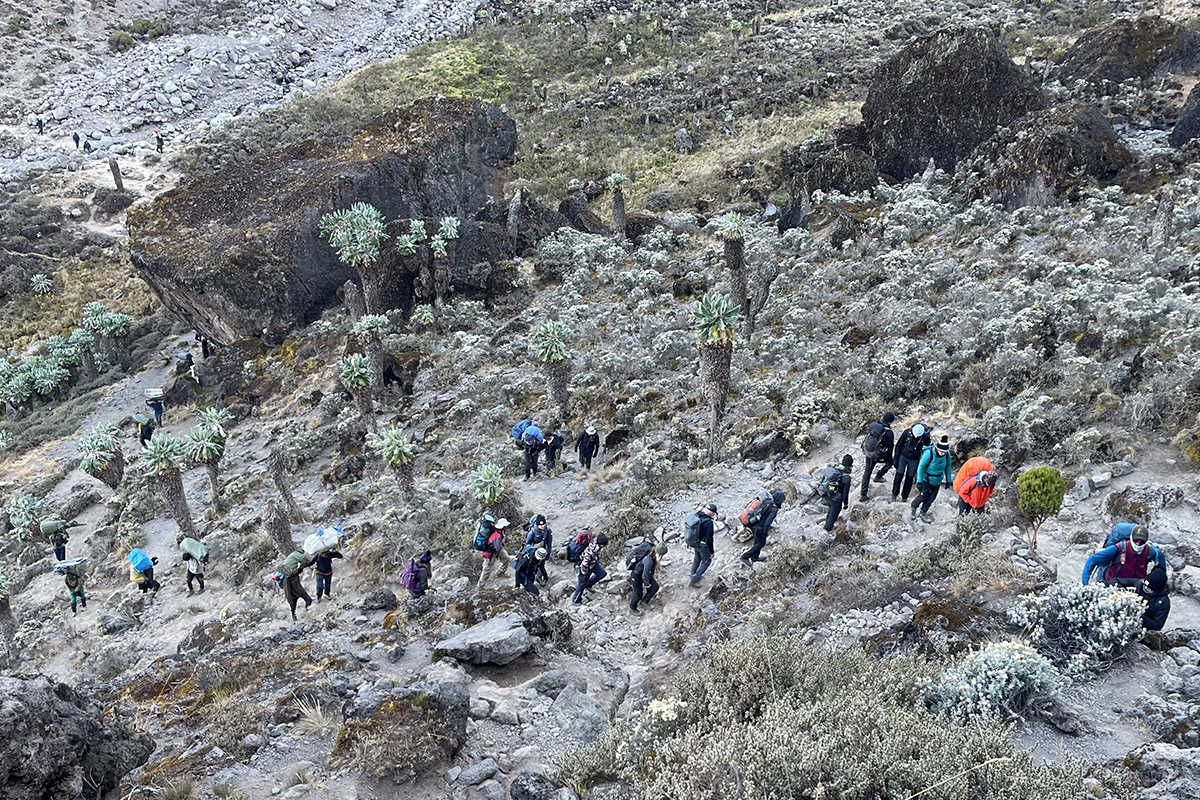
Staying well-hydrated is crucial, and climbers may consider medications under the guidance of healthcare professionals. Regular monitoring of symptoms and open communication with guides are essential for early intervention. In severe cases, a descent to lower altitudes is the recommended response. While physical fitness contributes to overall resilience, the unpredictable nature of altitude sickness underscores the importance of careful preparation, adherence to safety guidelines, and a responsive approach during the ascent of Kilimanjaro.
FAQs for Kilimanjaro climbing Difficulty
Is climbing Kilimanjaro worth it?
Yes, Climbing Kilimanjaro is worth considering for those seeking a physically challenging adventure with stunning landscapes. The trek offers diverse environments, a sense of achievement upon reaching the summit, and opportunities for cultural experiences. However, potential challenges include altitude sickness, costs, and the time commitment required. If you enjoy outdoor challenges and are prepared for the physical demands, Kilimanjaro can provide a memorable and rewarding experience.
Is climbing Kilimanjaro dangerous?
It is undoubtedly risky to climb a mountain that is 19,341 feet (5,895 m) high. Every year, an estimated 50,000 individuals attempt to climb Mount Kilimanjaro; 1,000 of them are forced to be evacuated, and 10 of them die. It implies that the likelihood of dying on the mountain is essentially zero—0.0002%. In other words, the greatest cause of fatality is altitude sickness, and there is only one death for every 5,000 climbers.
What is the success rate of climbing Kilimanjaro?
The success rate of climbing Kilimanjaro varies, but on average, it is estimated to be around 65-70%. Success is often defined as reaching the summit, Uhuru Peak, at 5,895 meters (19,341 feet) above sea level. Several factors contribute to the success rate, including the chosen route, the duration of the climb, the level of acclimatization, the expertise of the guides, and the overall fitness of the climbers. Climbers need to be well-prepared, physically fit, and take the necessary precautions to minimize the risk of altitude sickness, which can impact the likelihood of reaching the summit.
Can I summit Kilimanjaro by myself?
No, and yes! It is feasible to climb Kilimanjaro alone, away from other trekkers and crowds. You will still receive assistance from porters and guides, though. As the Tanzania Tourism Board forbids hiking with a guide, porter, and other crew members, even though you will be the sole trekker, you will truly be with others. The ratio of trekkers to support staff is 1:4, so if you're a solo climber, four other trekkers from your organization will help you.
How cold is it at Kilimanjaro's summit?
The glacier zone, where the peak of Mount Kilimanjaro, also known as Uhuru Point, is located, has an average daytime temperature of roughly 21 °F. All ascents, however, begin at about midnight to arrive at the Uhuru peak before daylight. Consequently, you will be trekking at night when the temperature drops to between -7 and -29 °C (19 and -20 °F).
Do I require oxygen to climb Mount Kilimanjaro?
Most people who try to climb Mount Kilimanjaro fail because they get sick from the high altitude. The body's reaction to the low oxygen levels in the environment is this illness. Even though you don't need supplemental oxygen to climb Mount Kilimanjaro, you might need extra oxygen if you get altitude sickness from a lack of oxygen while trying to reach the top. However, excessive use of oxygen may be extremely harmful to your health. If a person has altitude sickness at very high altitudes above 23,000 feet, they are usually given more oxygen.
Is the Kilimanjaro climb more difficult than the journey to Everest Base Camp?
If you compare the Kilimanjaro climb to the Everest Base Camp Trek, you will find that the Kilimanjaro climb gets you to higher altitudes considerably more quickly. Depending on the route, it takes 4 to 6 days to ascend Mt. Kilimanjaro (19,341 ft) from Moshi (2,932 ft), which is a gain of more than 16,000 ft in elevation. According to statistics, the total success percentage for summiting Kilimanjaro is 65%, while the success rate for reaching Everest Base Camp is over 90%. So, climbing Kilimanjaro is considered more difficult than trekking to Everest Base Camp. This is especially true given that Kilimanjaro rises quickly and has a big elevation gain.
What to know before climbing Kilimanjaro?
Before climbing Kilimanjaro, it is important to prioritize your physical fitness, choose an appropriate route, select a reputable guide service like Footprint Adventure, pack suitable gear for diverse climates, and be aware of altitude-related risks. Obtain necessary permits, understand weather variations, consider the time commitment, budget for associated costs, ensure comprehensive health insurance, and respect local cultures. Adequate preparation and awareness of these factors contribute to a successful Kilimanjaro climb.
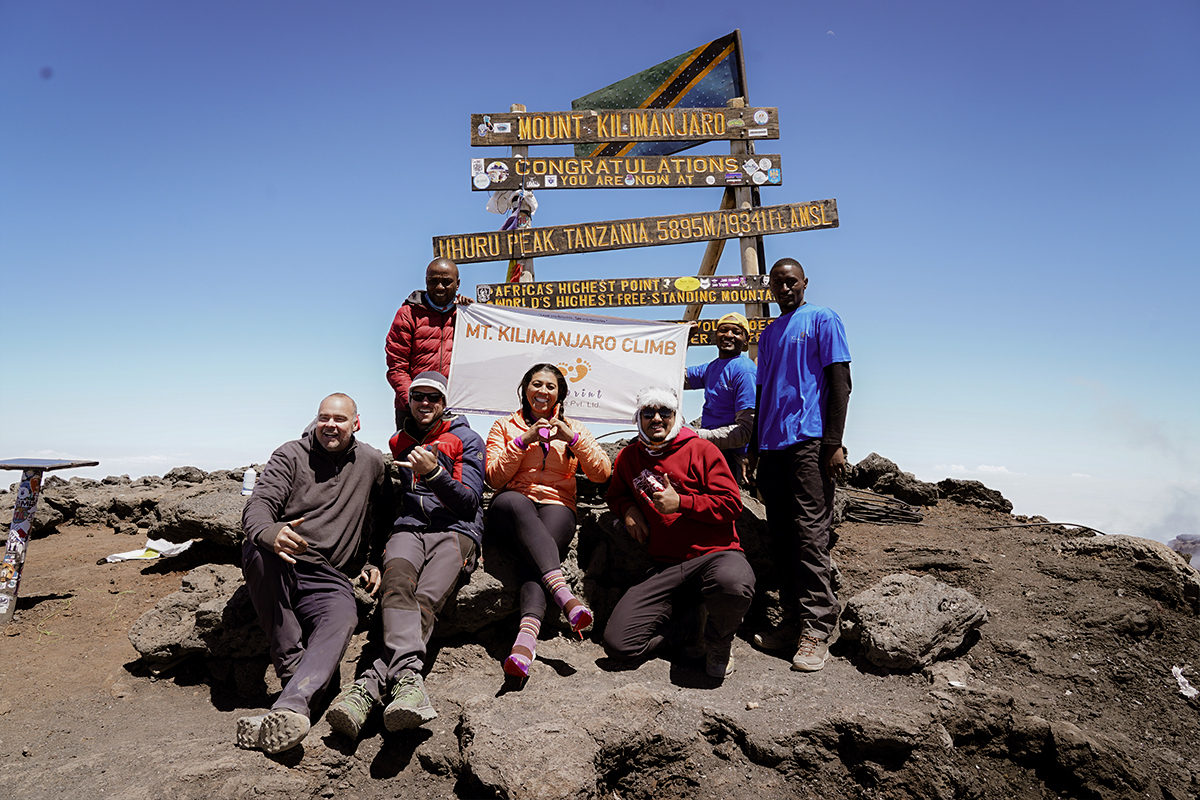
Is Kilimanjaro a hard climb?
Climbing Kilimanjaro is challenging due to its high altitude, varied terrain, and unpredictable weather. The prolonged duration of the trek and the need for proper acclimatization contribute to the Difficulty of climbing Mt Kilimanjaro. While not technically demanding, the climb requires physical fitness, mental resilience, and preparation for diverse conditions, making it a significant undertaking for those seeking to reach the summit successfully.
What is the hardest part of climbing Kilimanjaro?
The hardest part of climbing Kilimanjaro for many individuals is often dealing with the effects of high altitude sickness. Altitude-related challenges, including symptoms of acute mountain sickness such as headaches, nausea, and fatigue, pose a significant hurdle as climbers ascend to higher elevations. The reduced oxygen levels at higher altitudes can impact physical and mental performance, making acclimatization and careful monitoring of symptoms crucial. Altitude-related difficulties are a central challenge that climbers must navigate to reach Kilimanjaro's summit successfully.









